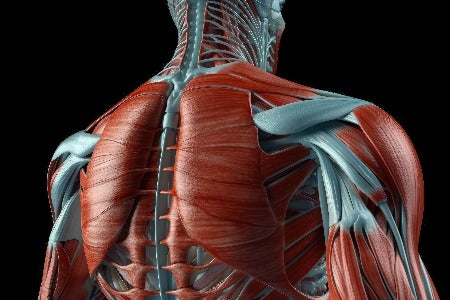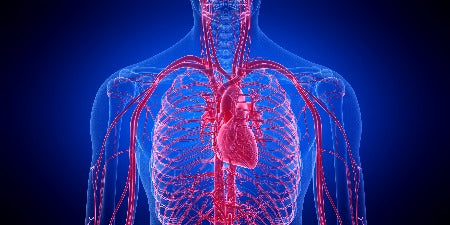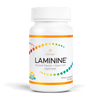Degenerative Disorders Introduction
Degenerative disorders cast a shadow over countless lives, affecting many individuals. From the gradual erosion of cartilage in osteoarthritis to the relentless decline in cognitive function seen in Alzheimer's disease, these conditions encompass a broad spectrum of ailments that challenge both patients and healthcare providers alike. Joint discomfort is a prevalent issue among many individuals grappling with degenerative disorders such as osteoarthritis. Stem cell therapy has emerged as a promising avenue for addressing this challenge.
By harnessing the regenerative potential of stem cells, researchers aim to alleviate joint discomfort by promoting tissue repair and regeneration. As research in this field continues to advance, there is optimism for the development of more effective treatments to alleviate joint discomfort and improve quality of life for those affected around the globe.
Overview
Degenerative disorder is when there is progressive deterioration in the functionality or structure of the body's organs or tissues over time. Regarding joint discomfort, this means that the body’s cartilage healers, such as stem cells, can no longer keep up with maintaining your joint health. As degenerative disorders progress, they can significantly impact an individual's quality of life, leading to increased pain and reduced mobility.
Different Types of Disorders
There are several types of degenerative disorders such as musculoskeletal, neurodegenerative and cardiovascular. Recognizing the spectrum of degenerative disorders, including musculoskeletal, neurodegenerative, and cardiovascular conditions, underscores the complexity of these health challenges.
1. Musculoskeletal

According to Healthline, “Musculoskeletal disorders (MSDs) are conditions that can affect your muscles, bones, and joints.” Some of these disorders include osteoarthritis, degenerative disc disease and osteoporosis. Osteoarthritis, as defined by the Centers for Disease Control and Prevention, is “the most common form of arthritis. Some people call it degenerative joint disease or “wear and tear” arthritis. It occurs most frequently in the hands, hips, and knees.”
According to Healthline, symptoms can be having stiff joints, recurrent pain, swelling and dull aches. This can happen in various parts of your body such as your wrists, neck, legs, knees, feet and shoulders.
In terms of treatment, Healthline states that the physician will recommend treatments based on the person’s diagnosis and the severity of the symptoms experienced and may suggest exercise and over-the-counter medications such as ibuprofen or acetaminophen. They further elaborate and state that physical or occupational therapy, or both, could be recommended as well for certain cases.
Heathline states that the risk of developing musculoskeletal disorders is affected by numerous factors and those are age, activity level, lifestyle, family history and occupation. By understanding these factors, this can help individuals take proactive measures to mitigate their risk and prioritize their musculoskeletal health. Moreover, staying informed about these influences can empower individuals to make informed decisions regarding their daily activities and healthcare choices.
2. Neurodegenerative

According to Cleveland Clinic, neurodegenerative diseases are “Neurodegenerative disorders are chronic conditions that damage and destroy parts of your nervous system over time, especially your brain. These conditions are permanent and incurable, but many are now treatable thanks to medical advances.”
Some neurodegenerative disorders are Alzheimer's, Parkinson's and multiple sclerosis. These neurodegenerative disorders not only pose significant challenges to those affected but also demand extensive research efforts to develop effective treatments and interventions. Understanding the distinct characteristics and progression of each disorder is crucial for advancing diagnostic techniques and therapeutic strategies aimed at improving patient outcomes.
According to Heathline, some symptoms of these disorders include memory loss, apathy, anxiety, a loss of inhibition and mood changes. These symptoms can vary in severity and may worsen over time if left untreated. Early detection and intervention are crucial for managing these conditions effectively. Heathline states that, “...treatment can help. The goal of treatment for these conditions is to try to reduce your symptoms and help you maintain quality of life. Treatment often involves the use of medications to better manage your symptoms.” A combination of medication, therapy, and lifestyle adjustments can provide comprehensive support in managing symptoms and enhancing overall well-being.
Cleveland Clinic states that dozens of possible causes or risk factors for neurodegenerative disorders have been identified by experts, typically falling into several specific categories including genetics, age, environment, medical history, habits, routines and choices. By addressing the diverse array of influences contributing to these conditions, healthcare providers can better support patients in managing their symptoms and improving their overall quality of life.
3. Cardiovascular

Cleveland Clinic states that “Cardiovascular disease is a group of diseases affecting your heart and blood vessels. These diseases can affect one or many parts of your heart and/or blood vessels. A person may be symptomatic (physically experiencing the disease) or asymptomatic (not feeling anything at all).” The spectrum of cardiovascular conditions, whether symptomatic or asymptomatic, underscores the importance of comprehensive preventive measures and early detection strategies.
Some cardiovascular disorders are atherosclerosis and coronary artery disease, characterized by the buildup of plaque in the arteries.
According to Cleveland Clinic, some symptoms are chest pain, shortness of breath, dizziness and exhaustion. Frequent symptoms and severity of the conditions should not be dismissed and should be addressed.
According to Medical News Today, “Many types of CVD occur as a complication of atherosclerosis. Damage to the circulatory system can also result from diabetes and other health conditions, such as a virus, an inflammatory process such as myocarditis, or a structural problem present from birth (congenital heart disease).” This highlights the diverse range of factors that can contribute to cardiovascular issues, from lifestyle-related conditions like atherosclerosis and diabetes to genetic and developmental factors like congenital heart disease.
There are multiple ways to treat cardiovascular disease. According to the Cleveland Clinic, these could be making lifestyle changes (diet, increasing aerobic activity), medications, cardiac rehabilitation and active surveillance.
Conclusion
In conclusion, the exploration of degenerative disorders spanning types such as neurological, cardiovascular, and muscular systems reveal a complex interplay between genetic predispositions, environmental factors, and lifestyle choices. These disorders present significant challenges to individuals and healthcare systems worldwide. However, amidst these challenges lie opportunities for innovative research, advancements in medical technology, and holistic approaches to treatment and care.
By fostering interdisciplinary collaboration and prioritizing early detection, prevention, and personalized treatment strategies, we can strive towards mitigating the impact of degenerative disorders, improving patient outcomes, and ultimately enhancing the quality of life for affected individuals and their families. As our understanding of these disorders continues to evolve, it is imperative to advocate for increased awareness, resources, and support systems to address the growing burden of degenerative diseases on a global scale.






















Leave a comment
This site is protected by hCaptcha and the hCaptcha Privacy Policy and Terms of Service apply.